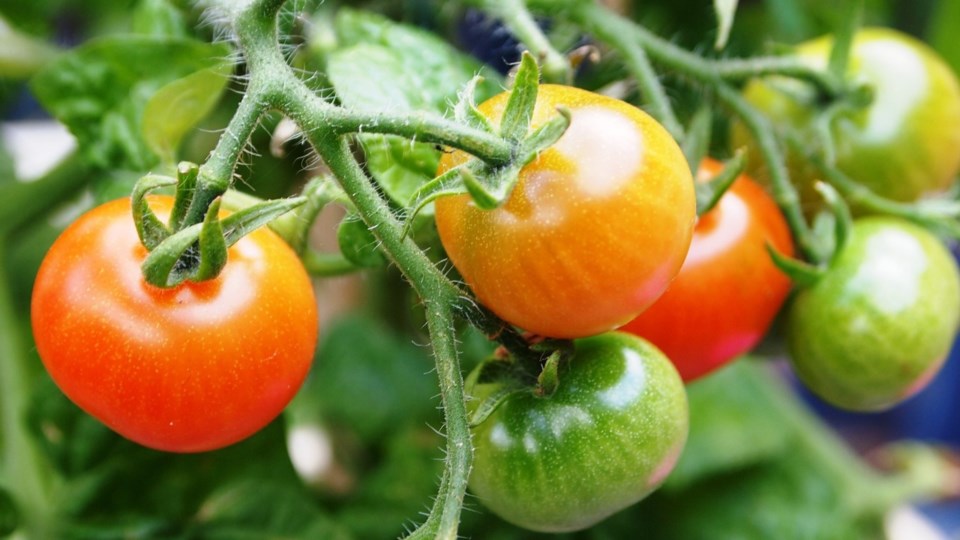The following column was submitted to the Tri-City News from Brian Minter — master gardener, best-selling author, Order of Canada recipient and co-owner of Minter Country Garden Store.
It’s a critical time for the tomatoes in our food gardens.
Already some of the larger varieties have a black splotch on the bottoms of their fruits.
It’s called ‘blossom end rot,' and although the tomato is still edible, a good portion of the fruit will not be useable.
This problem is simply a calcium deficiency and can be solved by sprinkling a handful of lime on the ground around the plant.
Tomato food, which states specifically on the package that it contains at least three per cent calcium, also works.
During our recent hot weather, we’re seeing a lot of curled and rolled-up tomato foliage.
This situation is not caused by a shortage of water but rather by the potato leaf roll virus for which the only control is good culture care, including proper watering and extra nutrients. At this time of year, I like to use a faster-acting liquid feed, something like the organic Alaska’s ‘Mor Bloom 0-10-10.' This formulation also helps speed up the sizing and ripening of the fruit.
If you have a massive number of tomato vines growing every which way, it’s time to thin some of them out, leaving fewer stems with flowers and fruit to ripen by mid to late September.
The dreaded ‘late blight’ is just around the corner and as of Aug. 15, it can show up anytime and blacken an entire plant almost overnight.
To prevent losing your tomato crop, when you irrigate keep the water off the foliage and use clear poly to create a rain shelter over your plants. If your tomatoes are growing in containers, simply move the containers under an eave when it rains. If you’re okay with using a garden fungicide, Bordo copper is an effective preventative spray for ‘late blight’ when applied as a fine mist on tomato foliage every ten days, starting Aug. 15.
The tomato horn worm is out in force, so keep a sharp eye out for it, as well as any other of its chewy friends. Physically picking them off is probably best. Go out at night with a flashlight to catch them.
Because of the constant watering, the soil in tomato containers has probably been leached of most nutrients, so your plants will need to be fed on a regular basis. If they look really tired, an application of 20-20-20 fertilizer will be a quick fix to tone them up, and then apply 14-14-14 slow-release fertilizer to continuously feed them all summer. If you prefer to stay organic, then something like Gaia Green 4-4-4 works great too.
If tomato blossoms are reluctant to set fruit, a gentle shake of the stems, before 7 a.m. (seriously) will encourage pollination, or you can always use a product called Tomato Fruit Set.
It would be a shame to lose any of your tomatoes at this stage of the growing season. So, keep a close watch from this point forward.




